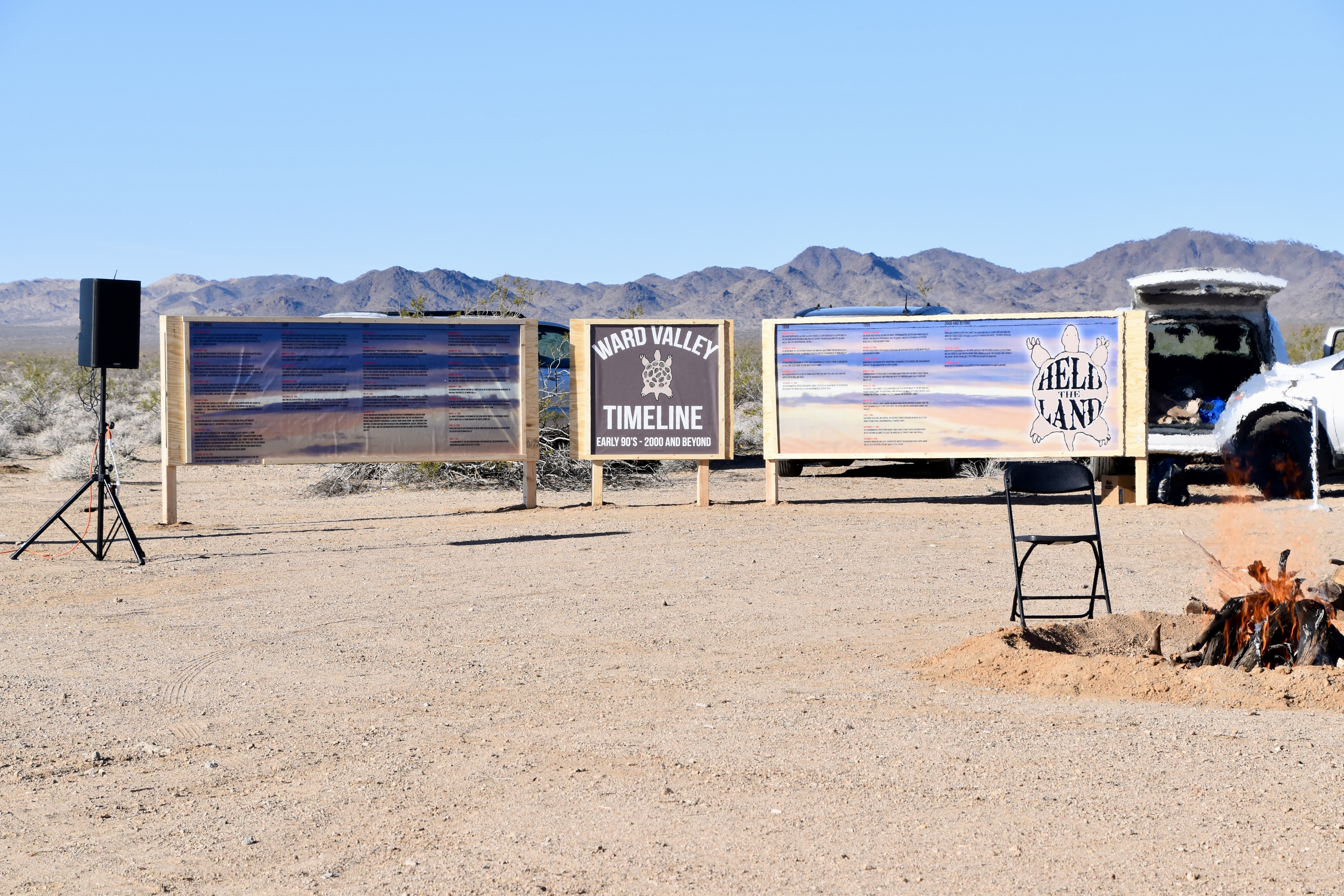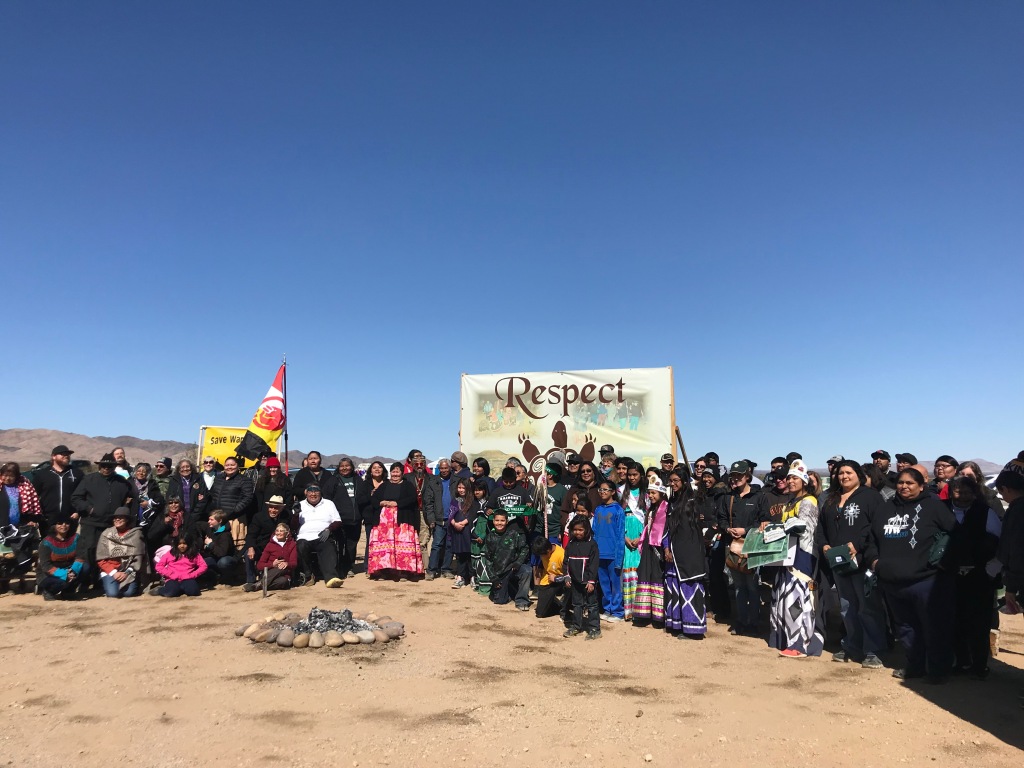Today President Biden signed the Avi Kwa Ame National Monument into law, which protects over 500,000 acres of land in Southern Nevada. The National Monument is named after and extends protections around an adjacent mountain called Avi Kwa Ame in the Mojave* language (Spirit Mountain in English). The national monument designation protects the plants and wildlife of the area; it also protects Native American culture.
Avi Kwa Me mountain and the lands that surround it have profound spiritual and cultural significance in the cultures of many local peoples, including the Fort Mojave, Cocopah, Chemehevi, Quechan and the Colorado River Indian Tribes (CRIT). The mountain and surrounding landscape is also sacred to other southwestern tribes that regularly traveled through the area.
The creation of the new national monument extends preservation work already done in the area. One such effort is the ongoing environmental remediation of the ground water underneath the Topock site. PG&E contaminated the groundwater there in the 1950s and 1960s by dumping hexavalent chromium. Later, the decontamination process threatened to further disrupt the Topock site, about two thirds of which had already been destroyed since the 1880s. The Fort Mojave and other tribes are engaged in a lengthy oversight process to facilitate environmental remediation of the groundwater with as little disruption to the site as possible.
Another related campaign is the long fight against a low-level nuclear waste landfill once proposed for Ward Valley, which is in the Mojave Desert just south of the new national monument. The Fort Mojave, Chemehuevi, Cocopah, Quechan and Colorado River Indian Tribes and their allies in other tribes and in the anti-nuclear, anti-toxics and environmental justice movements, successfully fought off the construction of this landfill between the late 1980s and the early 2000s. The proposed nuclear waste landfill threatened the endangered and sacred desert tortoise, had the potential to contaminate the Colorado River (which supplies drinking water to millions), and would have desecrated a landscape used for food, medicine, song and spirituality. The fight was long, and involved community organizing, lawsuits, spiritual practices, international solidarity work, and direct action. Perhaps the most dramatic of these tactics was a 113-day tribal-led occupation of the federally owned land where the landfill was to be built. Some activists occupied the site even longer, living there in tents for years.
The people who won the Ward Valley battle have hosted annual ceremonies to commemorate the land occupation that was part of their winning strategy, to practice spiritual rites, and to pass on the story of their victory to the next generation. Their 25th anniversary ceremonies last month brought people from near and far together again at the site in the desert where, thanks to their efforts, there is no a hazardous waste landfill. It was a wonderful opportunity to publicly launch the Ward Valley Archive, which hosts over 1300 (and counting!) digitized campaign documents from privately held activist files. The Fort Mojave Tribe also printed an abbreviated campaign timeline for display, and distributed the digitized archival files to leaders from the other four core tribes involved in the campaign.
When we want to honor those who came before us, it’s common to say that we “stand on the shoulders of giants.” Today’s creation of the Avi Kwa Ame National Monument indeed stands on the shoulders of giants – of tireless activists like those who dedicated their lives to protecting the land at Ward Valley, and in doing so arduously built public understanding for Native American life and claims to the land.
For more on the Ward Valley campaign, see the links page at the Ward Valley Archive, listen to this interview with former Fort Mojave Tribal Chair Nora McDowell, or look at some of the photos below.
* The Mojave people of the Fort Mojave Indian Tribe spell their name with a ‘j.’ The Mohave people of the Colorado River Indian Tribes (CRIT) spell their name with an ‘h.’ To make the above text easy to read, I have used the j spelling here when referencing either the language or the people. Either term is an anglicized version of the name they call themselves: Pipa Aha Macav, or in English, The People by the River.
Photos from the 25th Anniversary Ceremonies of the Ward Valley Occupation

Ward Valley, CA. February 18th, 2023. Photograph by Tracy Perkins.

At the 25th anniversary of the end of the Ward Valley occupation. February 18th, 2023. Photograph by Tracy Perkins.

Dancing. February 18th, 2023. Photograph by Tracy Perkins.

An abbreviated campaign timeline. February 18th, 2023. Photograph by Tracy Perkins.

Digitized archival files prepped and ready to share. February 16th, 2023. Photograph by Tracy Perkins.








